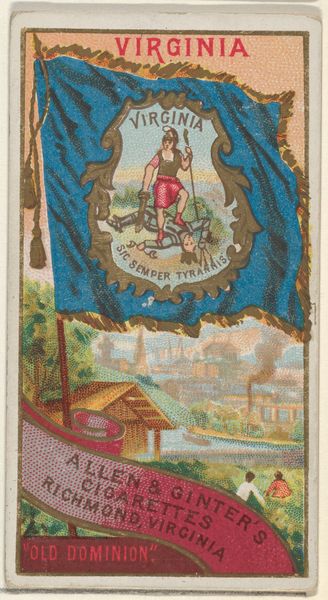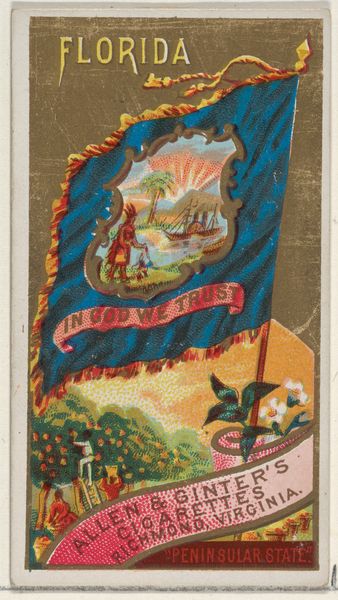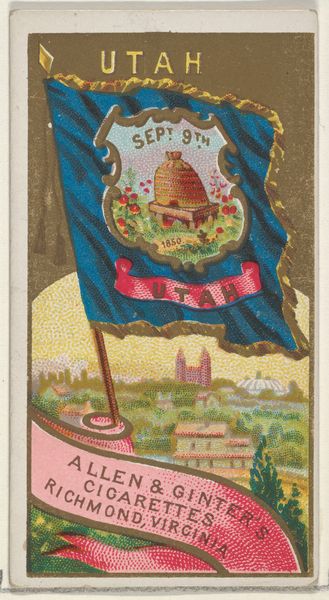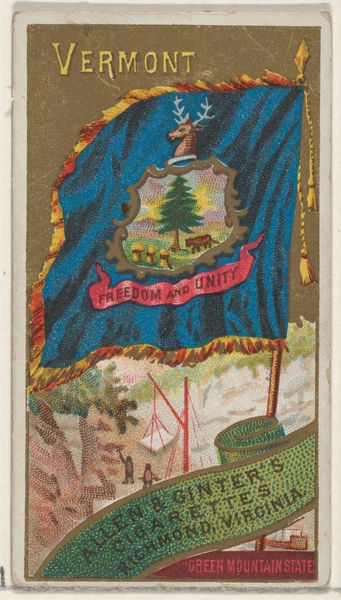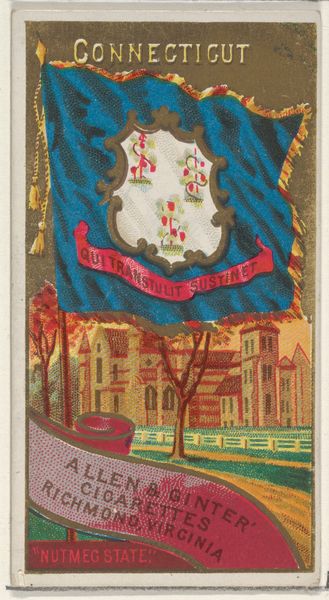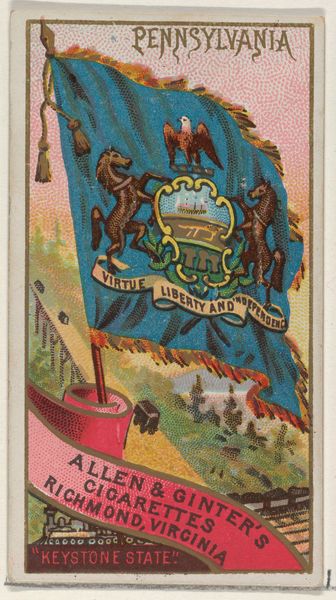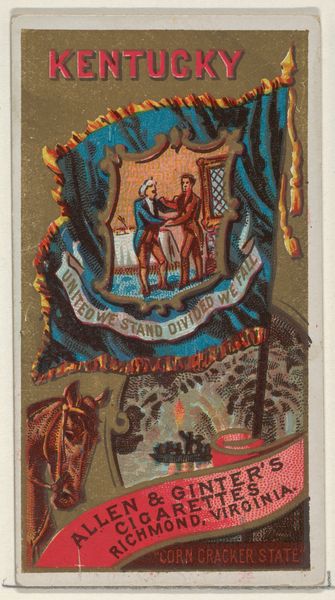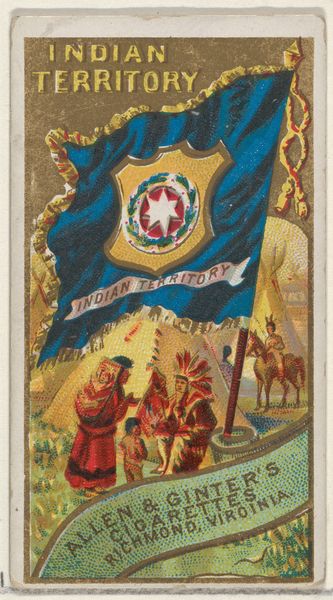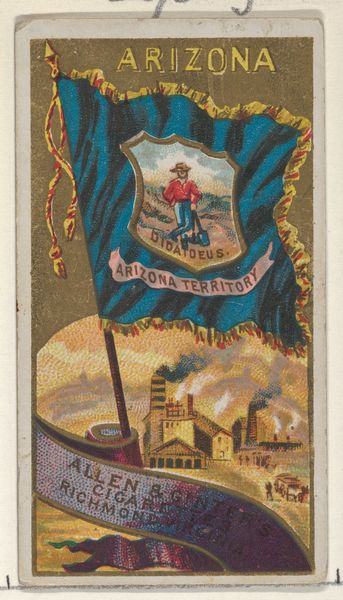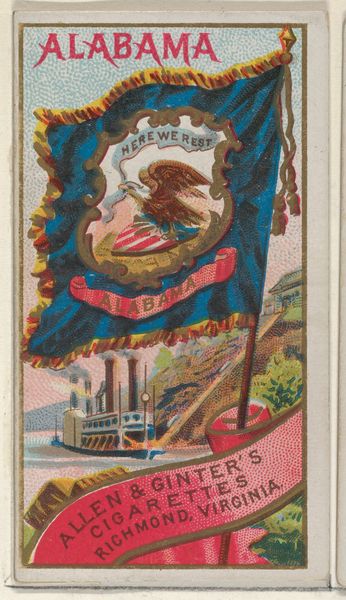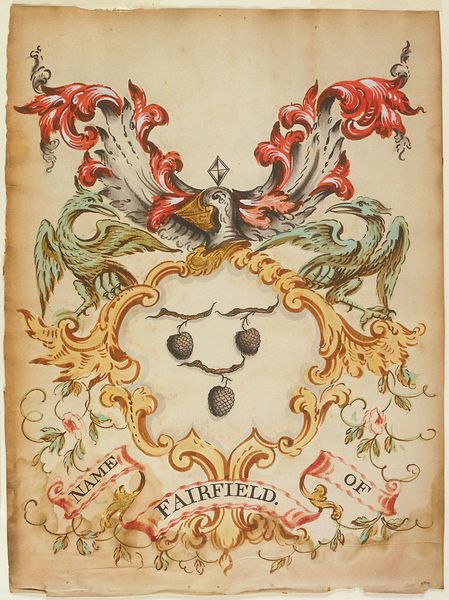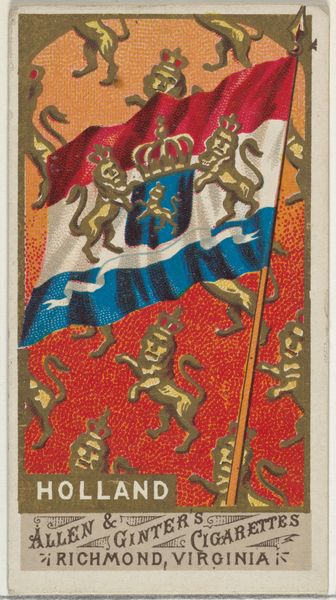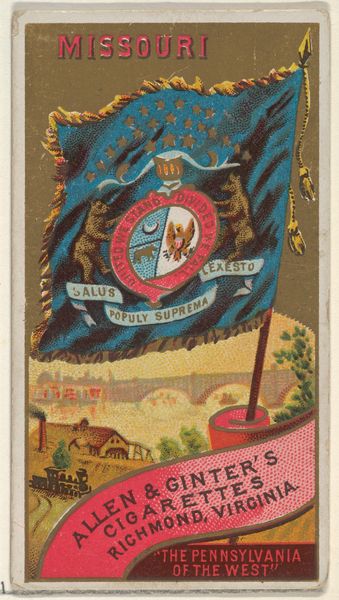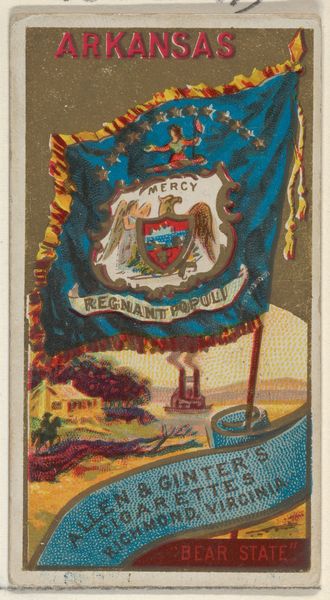
Mississippi, from Flags of the States and Territories (N11) for Allen & Ginter Cigarettes Brands 1888
0:00
0:00
drawing, graphic-art, coloured-pencil, print
#
portrait
#
drawing
#
graphic-art
#
coloured-pencil
# print
#
impressionism
#
coloured pencil
Dimensions: Sheet: 2 3/4 x 1 1/2 in. (7 x 3.8 cm)
Copyright: Public Domain
Curator: I'm immediately drawn to the stylized details, the limited palette working so effectively to evoke a particular sense of time and place. Editor: Indeed. What we’re looking at is one of Allen & Ginter’s cigarette cards from 1888, titled "Mississippi, from Flags of the States and Territories." The cards were small printed lithographs intended as collectible premiums. It’s a modest graphic art piece, rendered using colored pencils, offering an idealized vision of the state it depicts. Curator: "Idealized" is definitely the word. The flag is very prominently displayed, with that imposing eagle at its heart, overshadowing the scene below which seems to show both industrial activities, like extracting timber and agricultural labor picking what I believe to be cotton. Editor: It’s worth noting how that eagle, a clear symbol of American power and dominance, is juxtaposed with images of enslaved people working in cotton fields. These collectible cards often masked uncomfortable realities behind a veneer of patriotic imagery and economic progress. Curator: Exactly! The eagle bears a lineage tracing back to ancient Rome, embodying power and legitimacy. To see it hovering over laborers – likely former slaves in the post-Reconstruction South – sends a loaded message. Are they meant to be included or subservient in this American narrative? Editor: This imagery had real consequences. These cards circulated widely, shaping popular perceptions and reinforcing certain cultural narratives. The positioning of the workers below the flag promotes a subtle message of power, solidifying an established hierarchy. Curator: Even the banner at the bottom – emblazoned with “Allen & Ginter's Cigarettes Richmond, Virginia” – seems designed to normalize and promote these hierarchies within everyday life, commodifying labor under the guise of state pride. This almost becomes a metonym of capitalism! Editor: And don’t forget that it was made in Richmond, the former capital of the confederacy. That in itself brings extra baggage and suggests a possible allegiance that adds another layer to the scene depicted above. It asks us, who benefits from this depiction and whose story goes unheard. Curator: Precisely. It reveals how consumer culture participates in – or at least reflects – the power dynamics of the era. It leaves us with a complex picture of industrial America as well as lingering questions about progress, visibility, and value. Editor: Yes, and looking at this small object today lets us hold history in our hands in an unexpected and telling form.
Comments
No comments
Be the first to comment and join the conversation on the ultimate creative platform.
